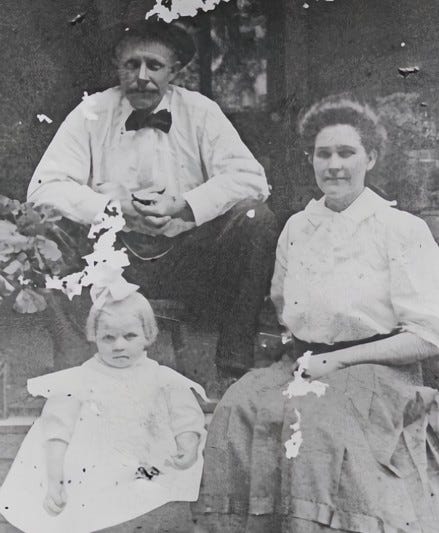Harry Horton: Orange Park Citizen Extraordinaire
The People of Clay County History
This story is by the folks at the Clay County Archives Center.
Pioneer families – These are the men, women, and children who first lived in Clay County dating back to pre-1858, the year Clay County (AKA, the Black Creek District) was initially carved out of Duval County. To this day, the descendants of these pioneers call Clay County home. There may be no better time than the present, due to population growth and construction, to learn more about these families and their early efforts to make Clay County their own. Through a series of articles and related genealogical studies, a spotlight will focus on them and their accomplishments through the centuries and decades.
Harry Horton died at the age of sixty in 1938 but in his six decades of life he accomplished an awful lot. Horton came to Orange Park from Massachusetts when he was only six years old in 1882. His parents, Henry and Dorcas, were tired of northern snowstorms and looked for opportunities in sunny Florida. Harry’s sister Grace came along, too.
Harry’s father, Henry Horton, visited Florida previously on business, contracting with landowners for lumber and turpentine. He built a sawmill on the banks of Doctor’s Lake. A 25-horsepower engine powered the mill and, by 1885, it could crank out 7,500 board feet of lumber a day. Seven men worked steadily manufacturing spindles, boards and shingles. Young Harry learned the sawmill’s mechanics and turned out to be quite handy and inventive.
Harry married Annie “Dolly” Hall after courting her for seven years. They lost their first two sons at birth but healthy Willa Mae, born in 1907, made it to adulthood as did their son Harry Alton, born in 1911.
Earlier, in 1905, Harry built a general store with living quarters above it. He also served as postman for two years in 1906 and 1907. Later, he built a cinderblock house at 421 Kingsley Ave with blocks that were handmade.
Harry was known as a Jack of all trades, so when Hollywood came calling he was asked by the film producer to build a set. The set was a mountain that would feature the film’s child star standing upon it surrounded by snarling wolves (in reality, whatever pooch was available at the local dog pound.)
Harry always had safety in mind and built the set in such a way that there was a protective barrier between the “wolves” and the actors. Ever the entrepreneur, Harry operated an ice cream and cold drinks stand at the city pier. The pier, 1,400 feet long, began where Kingsley Avenue met the St. Johns River and was where tourists disembarked the steamships and paddle wheelers.
Harry accomplished many “firsts” in Orange Park history. He had the first telephone and the first car, too. It was a 1913 Stanley Steamer that he drove up and down Kingsley Avenue kicking up clouds of dust as the distinctive “chuga chuga chuga” sound of the car’s steam engine filled the air. Harry also invented a refrigeration system.
Orange Park farmers were selling lots of fresh fruits and vegetables around this time and needed to keep the produce fresh on its way to northern markets. He called the contraption a “dense air machine” and apparently, it worked.
Harry did have a few quirks though. He liked to sue people and hence, he was in turn sued a lot. He seemed to have a love/hate relationship with the judicial system. In 1909, Harry sued a neighbor over “one chestnut mare named Sister Ollie” valued at $150.
There were numerous suits where Harry was attempting to collect a debt and vice versa. In the biggest case Harry was sued for slander. Harry’s hogs wandered over to his neighbor’s property and were causing havoc. Morrison, the neighbor, shot the hogs, which caused Harry to call the sheriff. Morrison hired the successful attorney Leonidas Wade to sue for $2,500 in damages made to Morrison’s reputation.
If nothing else, Harry’s lawsuits were entertaining—just like his life.





